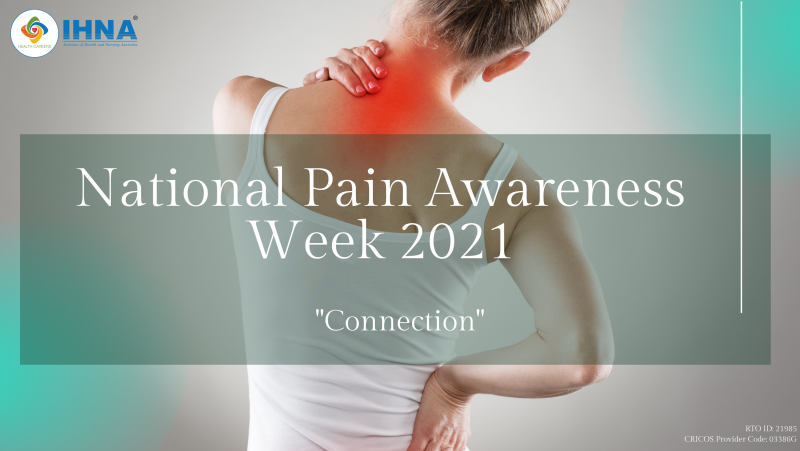Pain Awareness Week 2021
How Pain crawls into your life and affects it!
One of the issues with chronic pain is the different ways in which it infiltrates all aspects of your life and affects how you engage with the outside world. One significant area is work, which is essential since it not only helps us put food on the table, but it also becomes a part of who we are and how we identify. It also encompasses a significant portion of our social lives.
Balancing pain with social and work life
So, if you suddenly quit working, say due to a chronic back problem, you lose everything, or at least a lot of it. So, it’s critical to find methods to reengage with work so that you can maintain your sense of self, the social aspects of work, and simply ease yourself back into it. It also has an impact on how you perceive yourself. So, if you have anxiety as a result of your chronic pain, you could find yourself becoming this melancholy, nervous person who you weren’t before.
As a result, it has to be addressed and treated in order to assist improve your pain’s outlook. One of the other things that may happen is that your brain tells you that if you don’t move, if you don’t do anything, your back will break apart, and you’ll make things worse, and this inhibits your ability to exercise, get out into the world, and do the regular things around your house.
National Pain Week seeks to de-stigmatize chronic pain, promote healing connections between individuals in pain and their pain clinicians, and minimise isolation and suffering among people in pain.
What exactly is pain, and how do you deal with it?
Pain is a distressing physical and mental sensation caused by tissue damage. Its purpose is to give the body time to respond and avoid additional tissue damage.
When a signal is delivered by nerve fibres to the brain for interpretation, we experience pain.
Everyone’s pain experience is unique, and there are many various ways to feel and describe pain. It might be difficult to diagnose and treat as a result of this. Pain can be short-term or long-term, and it can be localised or diffuse across the body.
Chronic pain is an uphill struggle for most people 24 hours a day, seven days a week. This illness is debilitating and tiring, and it can have a negative impact on a person’s quality of life. Because chronic pain is unseen, individuals who suffer from it may feel stigmatised and misunderstood by friends, family, and even medical professionals.
Fast Facts:
Here are some essential factors to consider when it comes to pain:
- Damage to the tissues causes pain.
- It’s part of the body’s defence system. It cautions us to act now to avoid future tissue harm.
- Pain is difficult to diagnose because people experience and express it differently.
- Depending on the source of the pain, a variety of medicines and other therapies can be used to assist relieve it.
Managing Chronic Pain
Chronic pain affects more than one in every five Australians at some point in their lives. It is defined as pain that occurs every day for three months or longer, or that lasts longer than the usual period for recovery after surgery, trauma, or other disorders. For those trying to manage their pain, there are a variety of therapies available, and different people will react to them in various ways.
Working openly and collaboratively with your GP, pharmacist, allied health, and mental health professionals is thought to assist patients with chronic pain achieve the best results. Managing your pain in this manner is obviously costly and not available to everyone. There are various organisation working with politicians, policy makers and other key decision-makers to help make chronic pain management accessible and affordable for all Australians.
Taking care of someone who is in agony
People who care for a family member or friend who suffers from chronic pain play an important part in ensuring that their chronic pain is well managed, resulting in a higher quality of life. Caregivers also have a unique perspective and knowledge of what it’s like to be in chronic pain. This is extremely useful, as understanding and compassion are frequently cited as one of the most effective ways to assist someone manage their condition.
It’s your time to know more about it and help others in a time of need!
IHNA’s HLTAID011- Provide First Aid course will help you attain all the necessary knowledge one needs about first aid.
This unit covers the skills and information needed to deliver first aid to a casualty in accordance with the Australian Resuscitation Council (ARC) and other Australian national peak clinical organizations’ first aid recommendations.
The curriculum will cover anaphylaxis, asthma, CPR techniques on adults, children and infant, incident reporting, how to assess an emergency situation properly, DRSABCD, using an Automated External Defibrillator (AED), first aid procedures for bleeding, burns and fractures, managing medical conditions such as epilepsy and asthma, handling medical emergencies such as snake/spider bites, poisons and choking, infection control procedures, managing exposure to extreme temperatures, administering first aid for eye & soft tissue injuries, assessing and moving sick & injured, legal responsibilities of a first aider, basic anatomy, managing shock and much, much more!
IHNA’s Provide First Aid is 18 hours,
Available at our Melbourne
Course Fees: $120
For more details: visit here
Admissions Open!
“It is not an easy reality to face, but just as your chronic pain did not develop overnight, neither will the solution to finding relief develop in a day or two.”
“Healing severe or chronic pain, I believe, includes transforming our relationship to the pain, and, ultimately, it is about transforming our relationship to who we are and to life.”slot gacorslot gacorslot online

